Zhavise
| DATE | 2017-2020 |
| GENERAL RULES | Stress generally on first syllable. |
| WORD ORDER |
Subject.Article-ADJ-Object.Article-ADJ-Verb.Tense-ADV In a question, the subject is moved to the end of the phrase. |
| INSPIRATION | Richard Brodie's Chromaphonoglyphics |
| RELATED |
the world of Shungvales Guide to Kroma original Reddit thread I wrote to promote the Kickstarter (now out of date) Nawdd Vuwcid language Addij Vujid language |

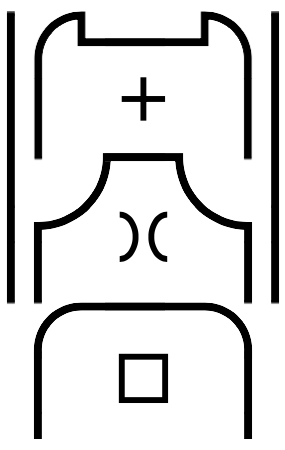
Zhavise is considered the lingua franca of the continent of Shungvales, and this is the in-universe reasoning for its grammar being fairly simple. On a meta level, the language was originally for Spire and I to mess about with, and was then being printed in a book aimed at an audience that doesn't necessarily know a lot about languages or would want to get bogged down in an overly-complicated grammar. Not every individual Zhavise sound has a corresponding transliteration, to keep the language looking as unthreatening to a newcomer as possible.
Verbs
Verbs don't conjugate according to pronoun (eg. kei varinan, "I am"; shei varinan, "they are"). The infinitive indicated by -n suffix (eg. varin, "to be").
A negative is indicated by a -ve suffix, any tense suffix always precedes the negative (eg. kei varinanve, "I am not").
| AFFIX | TENSE | EXAMPLE |
| -an | present | kei varinan, "I am" |
| -ar | future | kei varinar, "I will be" |
| -ok | past | kei varinok, "I was" |
| shan- | present conditional | kei shanvrin, "I would be" |
| shok- | past conditional | kei shokvarin, "I would have been" |
|
i-(C) im-(V) |
present progressive | kei ivarin, "I am being" |
| ir- | future progressive | kei irvarin, "I will be being" |
| ik- | past progressive | kei ikvarin, "I was being" |
| veit- | imperative | veitvarin, "be!" |
| -oak | future perfect | kei varinoak, "I will have been" |
Pronouns
Pronouns in Zhavise are very regular. The object form of a pronoun is used in place of a reflexive pronoun and possessive pronouns act as suffixes to the noun.
Standard Zhavise word order is SOV, but because the endings clearly indicate intended meaning a speaker could put the object before the subject for emphasis, or in order to indicate deference/hierarchy. Doing this to a superior is considered fairly old-fashioned and in most cases would be seen as sucking up in modern speech.
Gender is a more abstract concept in Zhavise, and 3rd person pronouns are considered as colours rather than male/female/etc. Red is the default set of pronouns to refer to someone by.
| SUBJECT | OBJECT | POSSESSIVE | |
| 1st person (single) | kei | ko | -ka |
| 1st person (plural) | nei | no | -na |
| 2nd person | zhei | zho | -zha |
|
3rd person (single) non-human/inanimate |
pei | po | -pa |
|
3rd person (single) neutral/red |
sei | so | -sa |
|
3rd person (single) male-leaning/orange |
jei | jo | -ja |
|
3rd person (single) male/yellow |
feyei | feyo | -feya |
|
3rd person (single) female-leaning/green |
bei | bo | -ba |
|
3rd person (single) female/blue |
delei | delo | -dela |
| 3rd person (plural) | shei | sho | -sha |
Nouns
Definite/indefinite articles are added to the noun as suffixes.
- -ot - indefinite article (eg. angot, "a dog")
- -is- definite article (eg. angis, "the dog")
Plurals are indicated by the word es (literally "number") being placed in front of the noun. Articles are not affected by quantity.
- es ang, "dogs"
- es angot, "some dogs"
- es angis, "the dogs"
Possessives are indicated either by the possessive suffix or the lut ("owner") construction.
- angka, "my dog"
- ang lut mari, "Mari's dog", lit. "dog of Mari"
It is possible to create compound words. The descriptor would go second.
- donavingir, "bookshelf" is made up of dona, "shelf" and avingir, "book"
- vingirdona, "shelfbook" would mean a book about shelves or a book that belongs on a shelf
Example sentences
-
English: You don't speak Zhavise
Zhavise: zhei zhavise manyanve
Transliteration: you Zhavise speak.negative -
English: I scared myself
Zhavise: keo ko byanok
Transliteration: I me frighten.past -
English: Does she want to go to the Oroshadan temple?
Zhavise: braroshin pyo gathrunis lut oroshadan resithinan delei?
Transliteration: go.infinitive to temple.the of Oroshadan want.present she
Writing system

 |
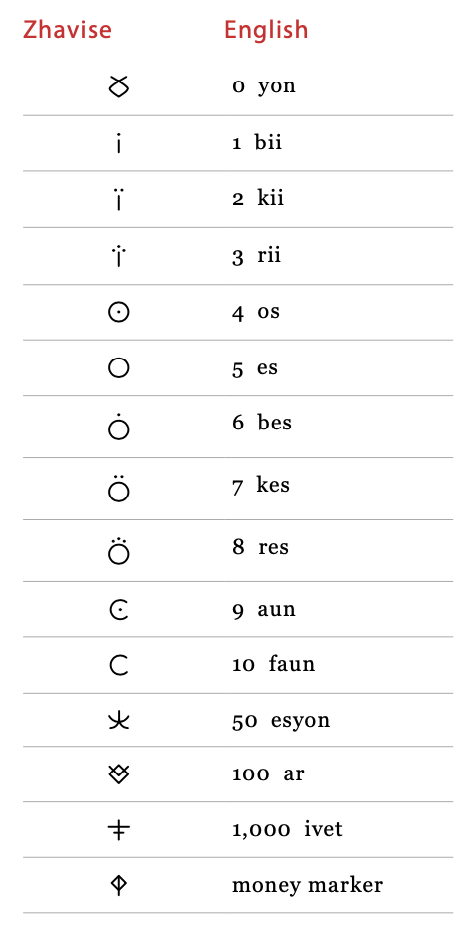 |
The Zhavise people are obsessed with colour and this has bled over to its writing systems (the name "Zhavise" actually shares a root with the word for "rainbow"). The Zhavise script is phonetic, read top-to-bottom and right-to-left. It was first developed for block printing, hence the modular and blocky shapes of the inis emora, or classic script. The enclosing dark shapes indicate the consonants while the inner colour represents the vowels. Each "block" represents a single syllable.
The classic script encounters some problems in poor lighting or low vision, especially for colourblind readers. Zhavise scribes developed patterns to replace the inner colour as an attempt to make the script more versatile. These patterns look similar to screen tones, as they are made up of holes punched into each colour field. The end result was quite unwieldy, and was fairly short-lived.
Despite quickly falling out of use, the dot patterns opened up an avenue to writing the script by hand. The written glyphs for the vowels developed from shorthand representation of each colour pattern. The handwritten script is now considered the standard for everyday use, but the classic script is still widely used and understood. Both scripts are readily combined together as well. It is acceptable to use shorthand vowels inside of the classic consonant containers, for example.
Writing examples

- benka zho nesinan is a common but slightly formal Zhavise greeting, referring to the magic wards that protect each home.
- thuyu aso and abringfeve cheyo are a shop name and a small advert respectively.
The classic script is mostly used in formal documents, but its most relevant modern usage is in fashion. The colour and shapes of one's clothing can be read as words or phrases.
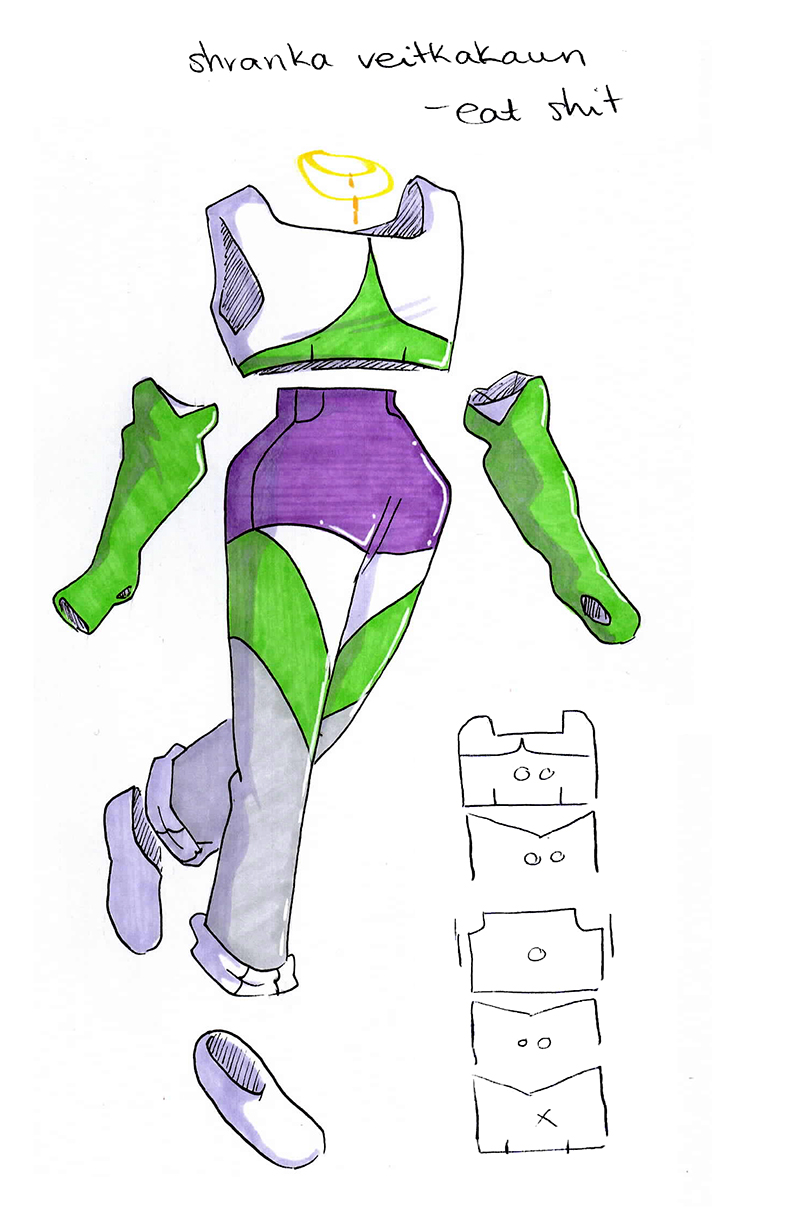 |
 |
Development
As mentioned above, the traditional Zhavise script was inspired by Richard Brodie's Chromaphonoglyphics, or CPG. I found CPG while browsing Omniglot, which is a really great compilation of all sorts of writing systems, and I was immediately fascinated. I hadn't seen a script like this before but Brodie's website had expired so there wasn't anywhere else I could read about it. Spire and I almost immediately got to talking about how we could develop this script into something usable and potentially typable.
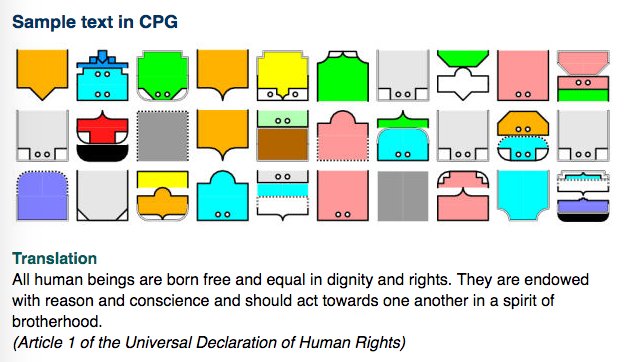
CPG is phonetic and each block comprises one word, with single-syllable words taking up the whole block and multiple syllables stacking on top of each other in thin slices. I liked this concept in theory, but the colours chosen were harsh on the eyes. We were also interested in improving the readability of the script for colourblind people - if this script was in use in the real world, what changes would need to be made to make it practical?
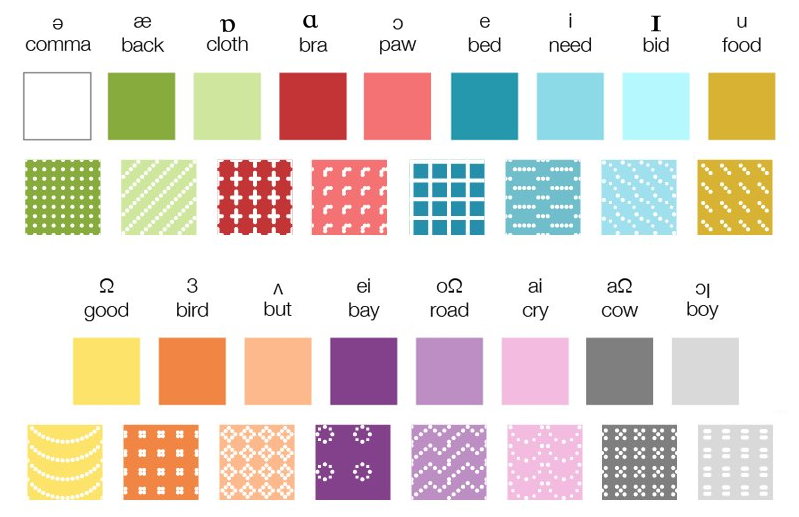
We picked out some more cohesive colours and started to put together some pairing interior patterns. You can see in the tests below that it's getting closer to traditional Zhavise but still feels unrefined. The interior patterns were a good idea for one or two words at a large scale but still ugly for longer strings of text.

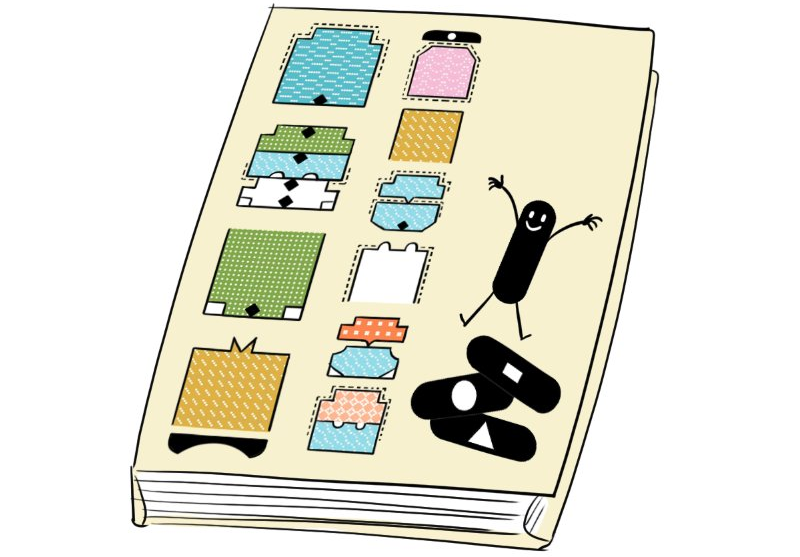
In the end we used the patterns as jumping off points for the modern script; even though the traditional script could still use the colours, writers can insert the modern symbols inside the syllables for better readability.
We were still stuck on the block concept though, with each word taking up a set space on the grid of the page called a "loaf". Punctuation also had to fit in these blocks, with three punctuation "beans" fitting in one loaf. Even if there were not enough beans to completely fill a loaf, the next loaf would begin in the next spot on the grid rather than moving up to avoid the empty space. The rules of this script were nice and neat, but it wasn't organic enough.

We finally ditched the loaf concept and stretched out the words so they no longer had to fit within a set block. Syllables are given room to breathe and the traditional script finally looks like something that could conceivably be used, with lines, colours, and patterns being produced reliably with blockprints. Beans were replaced with the new horizontal punctuation marks, which are much more cohesive with the lineweight of the rest of the letters. Wahoo it's Zhavise.